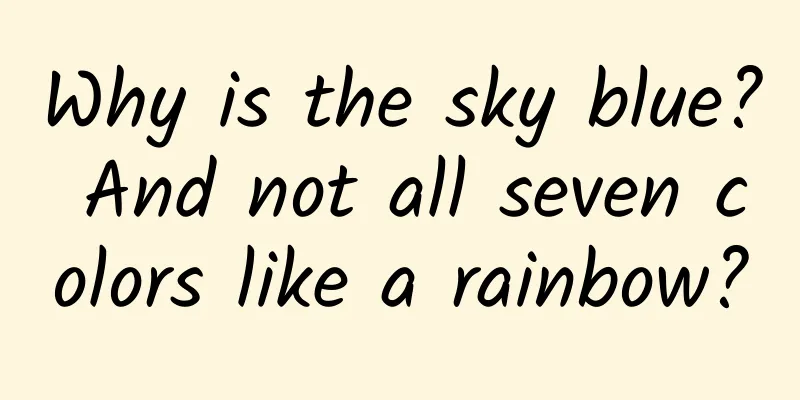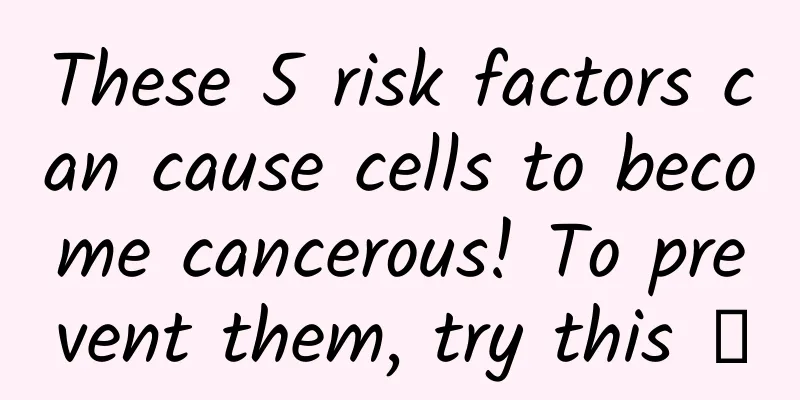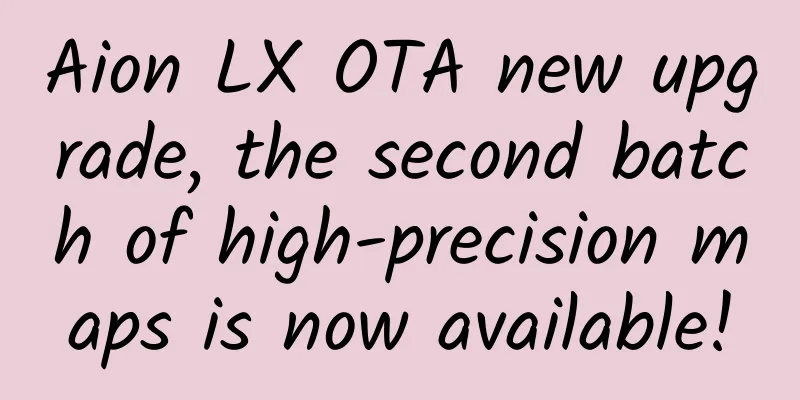Why is the sky blue? And not all seven colors like a rainbow?

|
Looking up, it was another beautiful day with blue sky and white clouds. Wait, a strange question suddenly popped up in my mind: The sky, why is it blue? The colorful sunshine adds the first stroke of blue to this azure color. Copyright image, no permission to reprint The essence of sunlight is all electromagnetic radiation from the sun, from the highest energy ultraviolet light, to visible light discernible by the naked eye, to part of the near-infrared spectrum. The higher the energy of light, the shorter the wavelength, so in visible light blue and violet light have shorter wavelengths and higher energy, while orange and red light have longer wavelengths and lower energy. Therefore, when white light passes through a prism, light of different wavelengths will be refracted in different directions, creating a wonderful dispersion phenomenon. In the sky, a similar wonderful process is also quietly happening, but what is at work in this process is not some artificial prism, but various tiny particles floating in the sky, oxygen, nitrogen, water, carbon dioxide, argon, etc. This process is called Rayleigh scattering. Rayleigh scattering refers to the scattering of an incident light beam by tiny particles, whose radius is much smaller than the wavelength of light or other electromagnetic radiation. Rayleigh scattering occurs quietly in gases, liquids and solids , but it is most obvious in gases. According to the law of Rayleigh scattering, the higher the intensity of light and the shorter the wavelength, the more it is scattered. Therefore, the scattering frequency of purple light with the shortest wavelength is more than 9 times higher than the scattering ratio of red light with the longest wavelength. When the sun is high in the center of the sky, the sunlight enters the atmosphere vertically or at a slightly oblique angle. In fact, only a small part of the red light will be scattered, while most of the blue light will be scattered and fill the entire space. Copyright image, no permission to reprint At this time, when we look up at the sky, we will naturally marvel at the clarity and blueness of the sky. However, when the sun rises or sets, the situation is slightly different. The sunlight enters the atmosphere nearly horizontally, and the blue light in the sunlight is scattered to an angle that we cannot see due to Rayleigh scattering. Therefore, the sky is printed in a beautiful orange-red color. Because of the unknown changes in the position of the sun and our observation, the sky will also appear in a very beautiful gradient color. When the sun rises, as its angle gets higher and higher, blue light begins to occupy the sky, and the sky turns from orange-red to blue. As the sun sets, as its angle gets lower and lower, red and orange light fills the sky, and the sky is reflected with a very beautiful sunset glow. The sun itself also appears particularly red at this time, like a plump salted duck egg. At this point, you might be wondering, since shorter wavelengths of light are scattered more severely, what about violet light, which has a shorter wavelength than blue light? What about green light, which has a slightly longer wavelength than blue light? In fact, this has to do with the structure of human eyes and brain. In fact, there is much more violet light scattered in the sky than blue light, but unfortunately, the human eye cannot recognize them. Humans have trichromatic vision, with three color recognition cones and monochromatic rods. When we receive a color signal, the brain will automatically analyze it and match it with a color, and then we will have a perception of color. Our eyes react more strongly to blue, cyan, and green light than to purple light. Although we see more purple light, we are not sensitive to it, and the signal strength we receive is not strong enough to suppress the signal strength of blue light. Copyright image, no permission to reprint Therefore, our brains preferentially process the sky we see as blue. In other words, if we are more sensitive to purple light, the sky we see should actually be purple, and the scene might look a bit magical. In addition, the same reason applies when green light is compared to red light. For the human visual system, when red light and green light exist at the same time, we cannot distinguish the green light very well. Instead, the brain will process this color as yellow. And because more green light is lost than red light in the morning or evening, the sky we see is the familiar orange-yellow or orange-red color after the adjustment. In other words, the color reflected in the brain does not directly correspond to the wavelength of light, and our vision requires further processing. Here's the truth about the blue sky, it's not all blue, it's just that our brain makes us see it mostly blue. Produced by | Science Popularization China Author: Hydra Review | Luo Huiqian Associate Researcher, Institute of Physics, Chinese Academy of Sciences The cover image and the images in this article are from the copyright library Reproduction of image content is not authorized |
<<: My diet is already very light, so why was I diagnosed with high blood lipids?
Recommend
Taobao operation: How to use Weitao to improve conversion rate?
Since Taobao was redesigned and the Weitao sectio...
Does it really help to sleep more when you have a cold?
After being infected with the Omicron strain of t...
Analyze the algorithm mechanism behind Tik Tok!
Understanding the platform rules is the key to pl...
How difficult is it for this robotic hand to pick up an egg?
It can crush a can when it needs strength, and it...
The new version of the diagnosis and treatment plan has changed? What does it mean that the Ct value has dropped from 40 to 35?
Mixed Knowledge Specially designed to cure confus...
Is it good or bad for foreign objects to invade the human body?
Fish bones, melon seeds, peanuts, batteries, toys...
Liu Zhanwen | Standing tall and shouldering the mission of intelligent transportation Fu Fanghua
As a female young scientist born in the 1980s who...
A must-have user growth map for new product developers
User growth is an eternal topic in the Internet c...
Can a space city become a reality?
On September 12, 2022, a New Shepard rocket of Bl...
WeChat subscription account messages are too annoying! Teach you how to turn off message push, simple and practical
1. Unfollow a subscription account [[416576]] Whe...
How precious are asteroid samples? Scientists are anxious because they can't retrieve them after collecting them
Collecting samples from distant asteroids is an e...
How much does it cost for a Leshan merchant to customize a tableware mini program?
There is no fixed price for the customization of ...
Celebrate Chinese New Year with a scientific flavor | There is a "dragon" in these flowers!
|||| Written by reporter Ji Jingjing Edited by Ch...
Renault joins hands with aviation companies to focus on unmanned vehicle simulation testing to accelerate the layout of autonomous driving
French automaker Renault has announced a partners...









